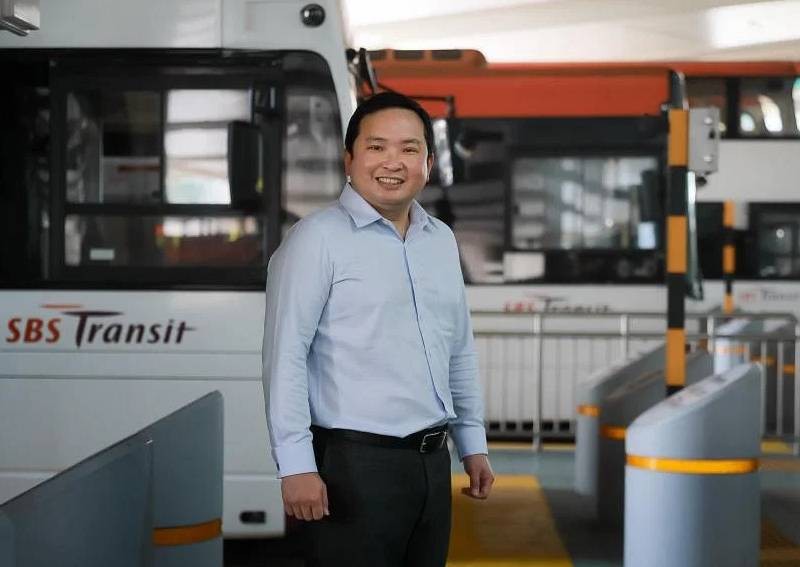'Bike village' to be created at area in Punggol popular with cyclists


SINGAPORE – By end-2024, cycling enthusiasts will have a space under the viaduct at Punggol MRT station where they can shop for cycling-related equipment, grab a bite or use as a meeting point for rides.
North East Line operator SBS Transit (SBST), which is developing this space, hopes that it will both provide amenities for the local community and attract more people to use public transport.
It is now working with the authorities for the needed approvals for the project, which is unofficially called the “bike village”.
In an interview with The Straits Times on Dec 13, Jeffrey Sim, SBST’s chief executive, said the transport operator realises that there is a big group of cycling enthusiasts who use a park connector network near the MRT station.
It thus decided to set up an area next to the station with food trucks and shops that could be selling cycling accessories or providing clinics for cyclists.
“The whole look and feel is going to be a bit like Simpang Bedok, where there are some food places in the centre of this village. You will have benches for people to enjoy their food,” said Sim. He was referring to the popular area in Bedok that has a slightly more village-like or laid-back atmosphere than typical town centres.
SBST, Singapore’s largest public bus service operator, also runs the Downtown MRT line, as well as the Sengkang-Punggol LRT.
Sim said SBST is tying up with partners to improve first and last-mile connectivity to the rail network, to get Singaporeans to rely less on private cars.
“This can either be in the form of active mobility – that’s walking or cycling – or some form of shared resource,” he added.
To that end, SBST has partnered bicycle-sharing firm Anywheel. Since April 2023, the SBST smartphone app has been showing real-time availability of shared bicycles at bus stops.
By early 2024, users can reserve a bicycle through the app.
Separately, the operator is partnering a car-sharing service to persuade companies to allow shared cars to be parked at their premises. The aim is to encourage employees of these companies to carpool to get onto the public transport network, instead of using private cars for their entire journey.
Sim said this tie-up has been going on for six months and that an official announcement on the alliance with the firm – which he declined to name – is expected in January 2024.
Turning to SBST’s technology initiatives, he noted that it signed an agreement in November with trade agency Enterprise Singapore to create the SBS Transit Mobility Innovation Centre, which will be used to develop tech solutions for commuters.
The projects will get some funding from Enterprise Singapore.
One such solution is a software that SBST is developing with a local company, to translate spoken words to sign language or written words in real time.
Slated to be ready by the second quarter of 2024, the software will make it easier for SBST to communicate with commuters who are hearing-impaired.
“In the future, we will have digital panels placed quite high up in the stations with sign language, because they won’t be able to hear the public address system announcement,” Sim said.
Also in the works is an app feature to provide customised information based on a commuter’s location during a train disruption.
This is expected to be ready by the middle of 2024 on SBST’s app.
The feature can potentially be loaded onto other platforms like the MyTransport.SG app owned by the Land Transport Authority (LTA).
Sim noted that one pet peeve of commuters during a train disruption is not knowing what is happening, and alternative travel options that may be available.
When the feature is ready, a commuter can use it to find out how long the disruption is expected to last, and navigate to the exact bus stop to board a regular or bridging bus. The app will also recommend other travel options.
“The feature fits into our mantra that during incident management, it is all about minimising inconveniences,” Sim said.
Under the current operating model for public buses, LTA owns the infrastructure and assets, and plans bus routes. Operators like SBST bid for contracts and are paid a fee to operate a package of routes.
[[nid:662749]]
By 2030, half of the public bus fleet in Singapore will be fully electric. As at end-2022, the fleet size was 5,847 buses.
Sim said SBST has been training its drivers and technicians to handle and maintain electric buses.
It is also learning from overseas partners like Metroline, a fully owned subsidiary of ComfortDelGro, which also holds a majority stake in SBST. Metroline has nearly 1,500 buses plying routes in London, including electric and hydrogen-powered types.
Transport giant ComfortDelGro also has ventures in taxi and private-hire cars in Singapore to provide point-to-point transport.
Responding to whether SBST considered working with other ComfortDelGro subsidiaries instead of turning to external partners like the car-sharing company, Sim said SBST is in discussions with its biggest shareholder on working together.
“We want to see how we complement each other, so I don’t see that there is a need for us to have a dichotomy of public or private, and whether it is bus, rail or shared resources or active mobility.
“I think, ultimately, we know that they each serve a different function, and they will be part of the ecosystem,” he added.
“By bringing it all together, you are able to provide the commuter with different options for them to make the most informed decision, which they can then take, depending on their needs”.
This article was first published in The Straits Times. Permission required for reproduction.
ALSO READ: 'Ultimate culture shock': American tourist surprised by $15k bicycle left unattended in Singapore